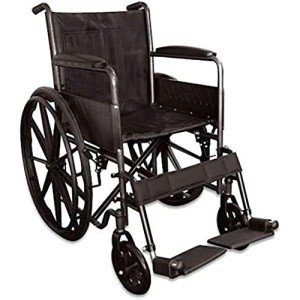20 Things That Only The Most Devoted Bariatric Wheelchair 24 Inch Seat Fans Should Know

Bariatric Wheelchair Seat Width
Seat Width
Having the correct seat width is very important to wheelchair users who spend longer periods in their chairs. Too narrow a seat will cause pressure on the hips and thighs which might cause sores or pressure points. Having too wide a seat can likewise make it tough for the user to reach the hand rims to move themselves or maneuver in small areas.
To determine the appropriate seat width an individual would rest on a chair normally and have their measurement taken across their lap at the largest point which is usually their hips. A wheelchair determining tape can be utilized to measure this, but a yard stick is chosen as it avoids people from wrapping the tape around their hips which would give an unreliable result.
The standard wheelchair seat width is 16" (narrow adult), 18" (basic grownup), and 20" (wide adult). For bariatric patients, a 24" seat is readily available. This durable extra wide bariatric wheelchair from Medline includes swing-away footrests, a carbon steel frame with rust- and chip-resistant chrome plating, and easy-to-clean vinyl upholstery. It has a weight capacity of 500 pounds.
Seat Depth
Generally, the seat depth of a bariatric wheelchair was added 2" to the measurement taken at the user's largest point (usually their hips). This was indicated to accommodate extra layers of clothes that might be used throughout cold weather condition. However, this practice is ending up being less typical as wheelchair users have the ability to invest more time indoors and are not wearing long coats. This makes the seat depth of a chair less essential when choosing a bariatric wheelchair. Nevertheless, it is still crucial to select an option that uses appropriate assistance for larger users.
The Medline folding extra wide bariatric manual wheelchair includes a comfy 24" seat width and a sturdy slide tube silver vein frame. It likewise has an adjustable axle and tool-free raising legrests.
Seat Height
When it comes to determining the proper wheelchair seat width you must always determine from the user's largest point which is usually their hips. You will also need to think about whether the user is going to be wearing a winter season coat as this might include 2" to the width needed.
When a wheelchair remains in use it must just be operated on level surface areas with the wheel locks totally engaged. This is to avoid the chair from having the ability to move slopes that are 10 degrees or greater. It is also crucial to bear in mind that any activity that may move the center of gravity in the chair should be finished with care. This consists of reaching for items that require the person to lean out of their seat or attempting to stand from it.
Whenever you have the chair in usage it is suggested that you frequently check it for damage and lube any areas that are deemed required. For instance, the casters ought to be lubed by eliminating the caster fork and using a multi-purpose grease to use to the caster stem bearings. Likewise, bariatric wheel chair can be adjusted by loosening up the bolt and after that moving them to the desired position. This permits the feet to sit comfortably on the footplate and prevents any pressure points from forming. This can be very uneasy for the user and if left ignored, can result in pressure sores.
Weight Capacity
Bariatric wheelchairs are designed to support more weight than standard wheelchairs. This makes them sturdier and better geared up to manage falls. They are also generally larger and wider, making them less maneuverable in tight spaces than basic wheelchairs. They need cars with unique ramps and lifts to pack them, in addition to motorists who understand how to finest transport them from one area to the next.
When picking a wheelchair, consider its weight capacity as it will be the primary determining consider whether it will accommodate your traveler's requirements. The weight capacity of the chair is often listed as a static load, implying that it shows the quantity of weight the chair can easily hold while stalling. However, some producers likewise note an active load that is based on a drop test and can replicate the effect of someone taking a seat in the chair. This may be a more reputable measurement of the weight limit, depending on your requirements.

If you plan to carry out activities that move your center of mass in the seat (such as reaching for things), make sure to have front casters pointed in a forward direction and wheel locks engaged so the chair will not tip over. Likewise, examine that casters are oiled regularly to avoid extreme wear and abrasions. The lubrication procedure involves eliminating the fork, separating the caster from the wheel, and greasing the caster stem bearings with premium multi-purpose grease.
